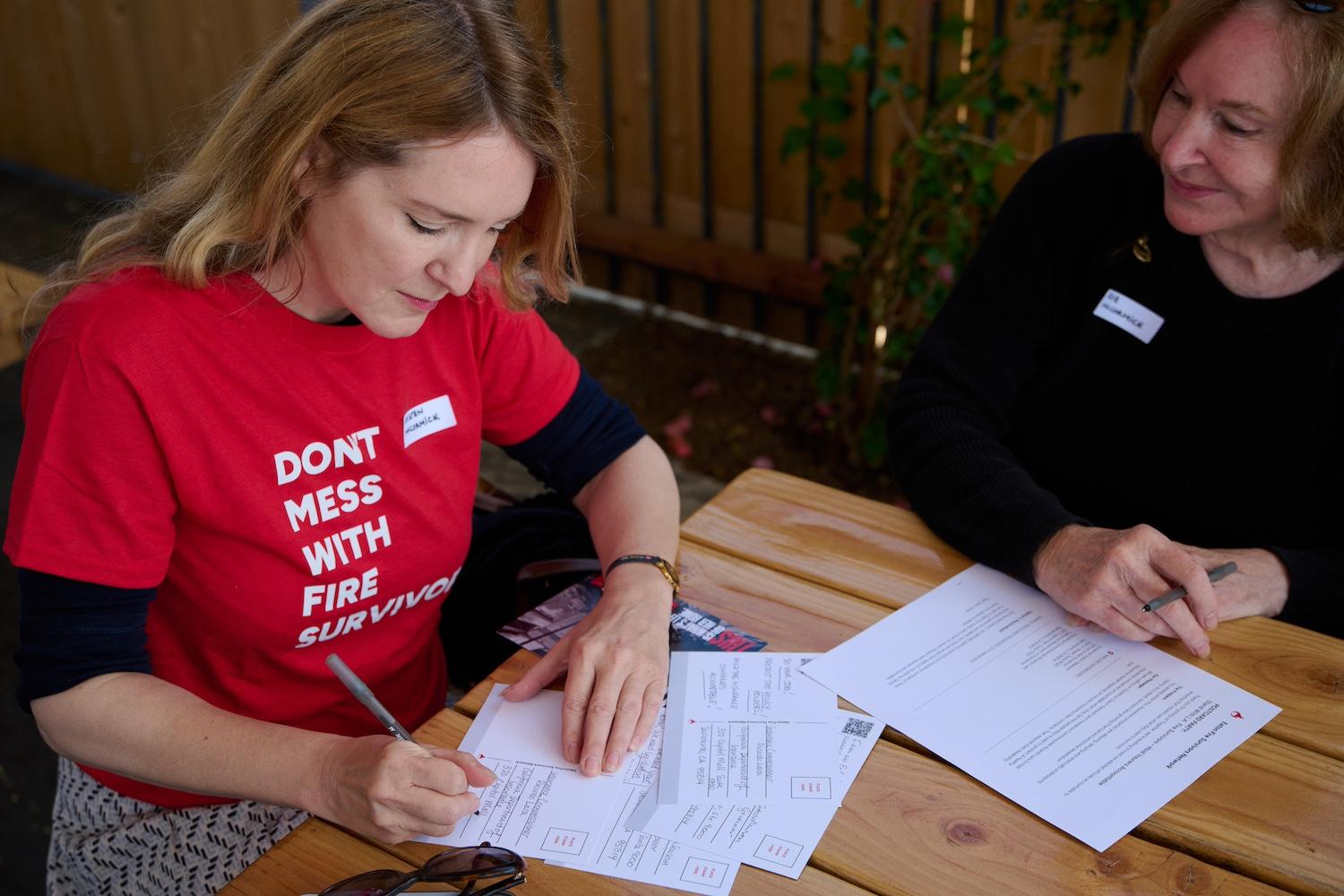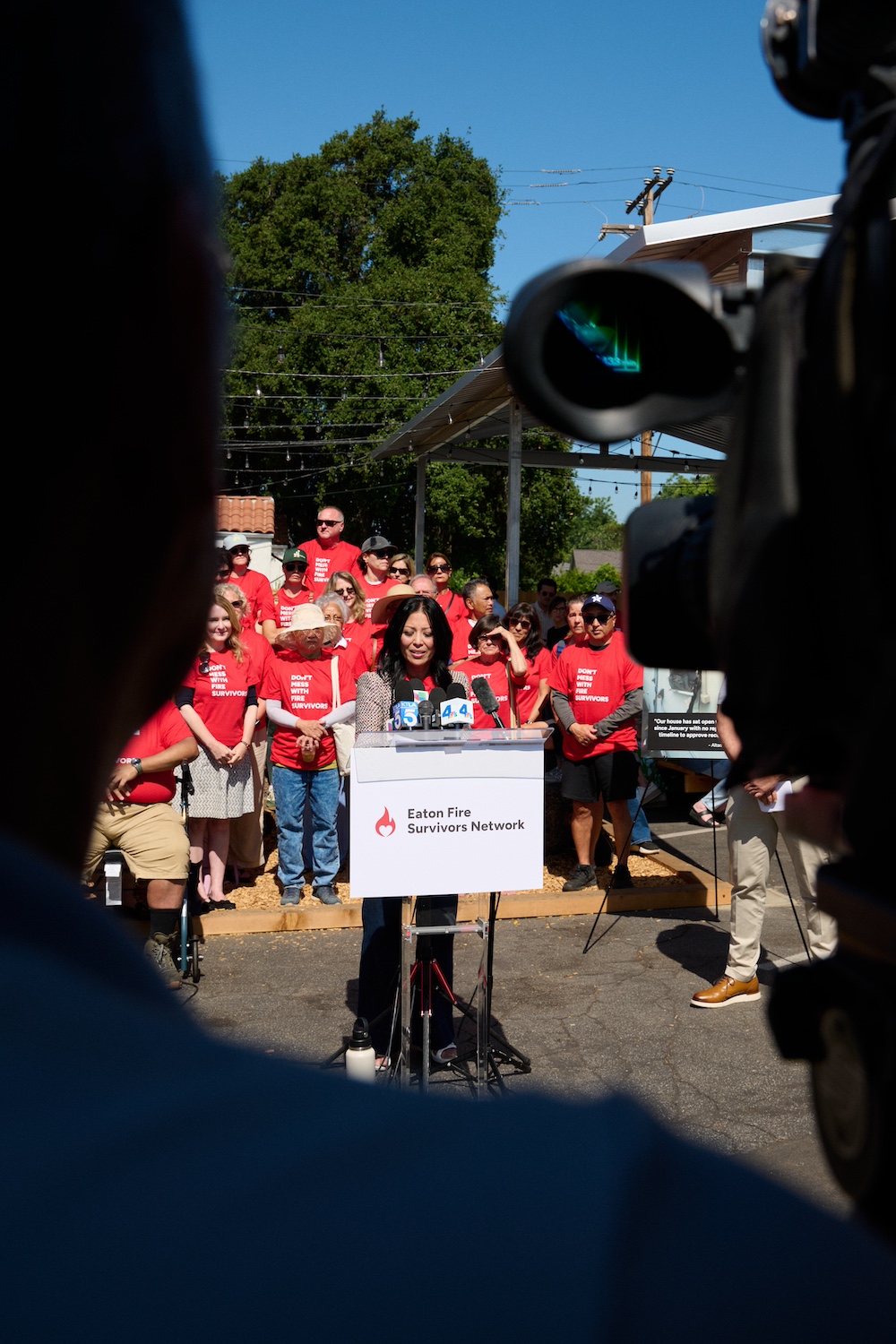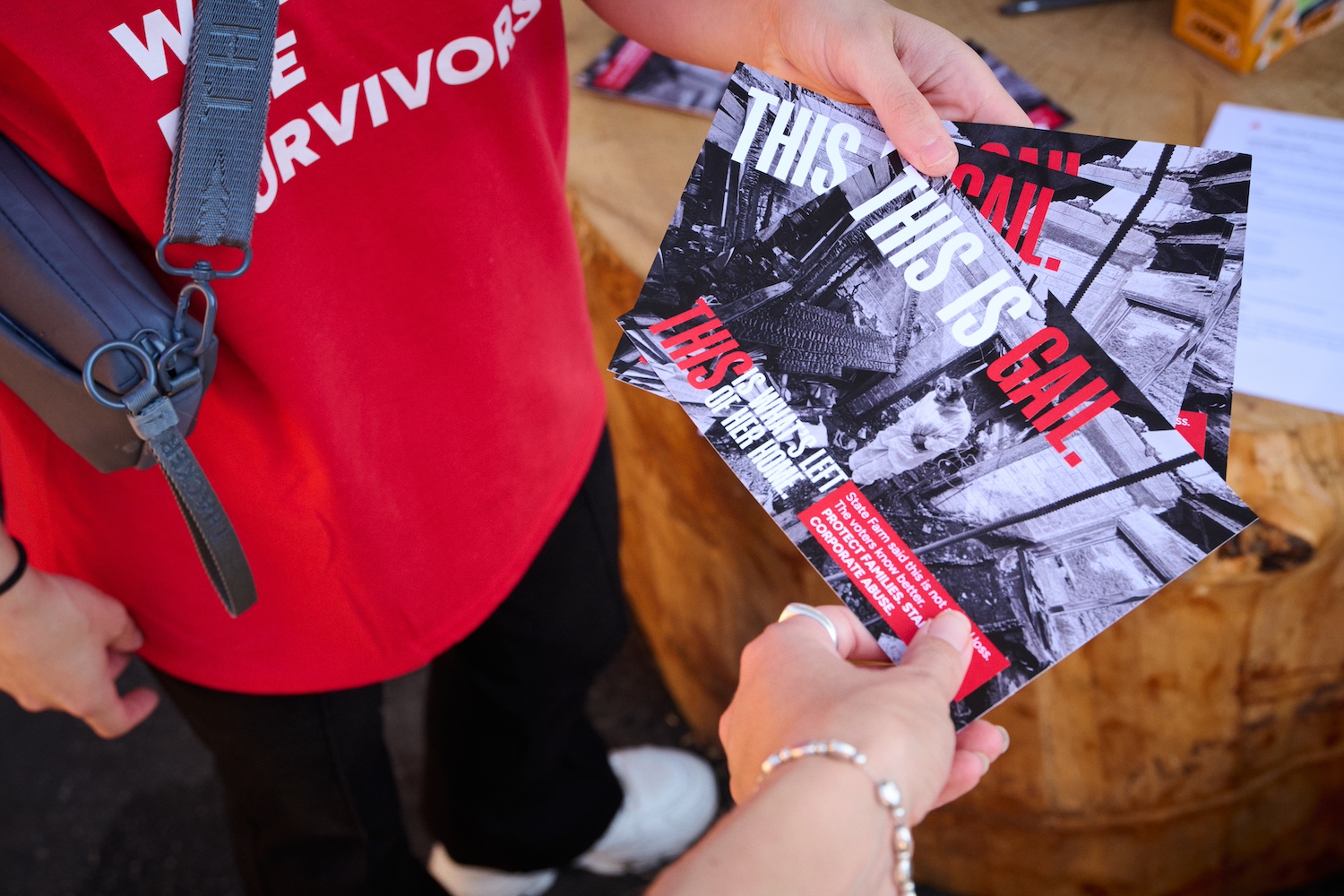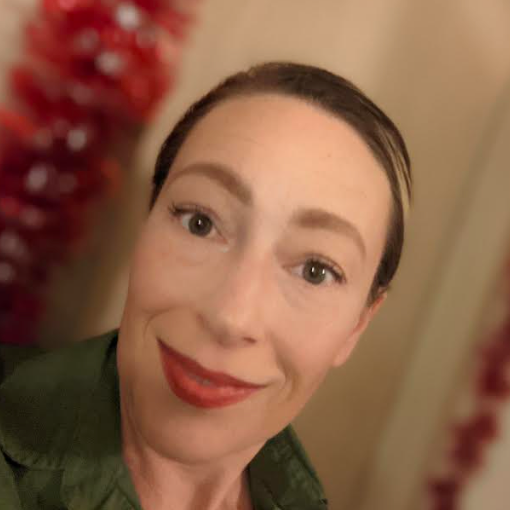
A LA fire survivor writes a postcard to California Governor Gavin Newsom and California Insurance Commissioner Ricardo Lara at an Extreme Weather Survivors and the Eaton Fire Survivors Network event in California. (Image courtesy of Extreme Weather Survivors.)
More than six months after the Los Angeles wildfires, residents are still waiting for insurance companies to keep up their end of the bargain. The insurers’ tactics? Delay and deny, Eaton Fire survivors Rossana Valverde and Sam Strgacich told TriplePundit. Now, Valverde and Strgacich are fighting back, alongside many of their neighbors, with the help of the Eaton Fire Survivors Network and the national support network Extreme Weather Survivors.
"Delay, deny and underpay"
The Eaton and Palisides Fires in LA earlier this year were responsible for at least 30 deaths. Survivors and affected businesses are facing up to $53.8 billion in damages, according to the Los Angeles County Economic Development Corporation. Most of them say they’re also dealing with arbitrary denials, delays and lowball settlement offers, leaving them with an untenable choice between remaining displaced or returning to homes with dangerous levels of toxic contaminants.
“The system is almost built to break people, so you'll accept some payout that's so significantly less than what you're owed,” Sierra Kos, co-executive director at Extreme Weather Survivors, told 3p.
“Delay, deny and underpay” became a calling card for the insurance industry following the fires. The term is echoed by survivors, activists, reporters and researchers witnessing this response in real time.
While the home that Valverde and Strgacich share survived the fire structurally, it tested positive for high levels of arsenic, lead and nickel that make it unsafe. Despite Valverde paying $9,000 per year for homeowners insurance and not filing a single claim in her 30 years with the company, the State Farm adjuster responsible for inspecting the couple’s insurance claim and determining the payout has dragged their feet every step of the way. The adjuster arbitrarily cut the original estimate the couple paid for out-of-pocket in half, Valverde said. Now they’re waiting on results from a second evaluation, which the insurer still hadn’t shared with them five weeks later.
“It's a long game of attrition, and I guess they are hoping that we'll give up and do it ourselves or accept their estimate,” Valverde said. All in all, she expects the cleanup and replacements for what can’t be cleaned to cost around $300,000.
Valverde and Strgacich aren’t alone in their experience. Some of their neighbors moved back into their homes, unable to weather any further displacement. The insurance companies deemed the toxicity in some of their homes livable, Kos said.
Bringing neighbors together
Eaton Fire survivors are learning how to fight for the money they’re owed by connecting with neighbors. Through the management and messaging platform Slack, and with the help of Extreme Weather Survivors, they network with each other, insurance experts, and survivors of previous fires who went through the insurance gauntlet. This method proved more helpful than webinars and videos because it allows for back-and-forth questions and answers, Kos said.
“By organizing and sharing tips on how to beat the system … it's shared learning,” she said. “They're becoming experts at how to battle their insurance company.”
Valverde is also connecting with her neighbors through text chains and emails. This open communication encouraged residents who didn’t know about the potential toxicity of their homes to have them tested and pursue claims against their insurance companies, she said.

Putting the pressure on
Extreme Weather Survivors and the Eaton Fire Survivors Network are working together to put fire victims front and center in the public eye. They held press conferences on the 100-day and six-month anniversaries of the fires, Kos said.
Speakers at the first conference used the opportunity to ask Ricardo Lara, California’s insurance commissioner, not to approve State Farm’s insurance rate hike request until the company made good on their policies. While the increase did go through, it also got the media’s attention, Kos said. Photos taken at the conference were used in small, targeted social media campaigns, which helped some of the featured claimants get connected with new adjusters at their insurance companies and receive settlement offers.
“There were apparently about a dozen [fire survivors] that were at this news conference, and they spoke in front of a microphone, and not long after that, they got immediate action from State Farm,” Strgacich said.
His wife’s efforts to do the same have yet to be successful.“We've had postcard writing parties, my husband and I picketed once, I've talked to the local news media and been on TV a couple of times,” Valverde said. “But so far, nothing has moved State Farm on my case.”
Extreme Weather Survivors ran complementary organizing events around the country when the second press conference was held in LA. At the events, survivors from fires in Colorado, floods in North Carolina, and disasters in New York wrote postcards to California Governor Gavin Newsom and Commissioner Lara, encouraging them to take action.

Part of a bigger problem
State Farm is under investigation for how it is managing claims in the wake of the LA wildfires, thanks to survivors’ activism and the slew of complaints filed. But Valverde and Strgacich have their doubts about how effective it will be.
“I don't know how transparent that investigation is going to be, or when it's going to be completed,” Strgacich said. As far as he knows, State Farm has only responded with a generalized claim that it spent billions paying out thousands of policyholders so far.
And the problem goes beyond California, Kos said, drawing the connection to other climate disasters happening across the country. The Eaton Fire survivors are fighting one battle in a much larger war.
“There is corporate greed and unfair — and I would argue, illegal — practices happening with insurance companies that are not being regulated,” Kos said.

Riya Anne Polcastro is an author, photographer and adventurer based out of Baja California Sur, México. She enjoys writing just about anything, from gritty fiction to business and environmental issues. She is especially interested in how sustainability can be harnessed to encourage economic and environmental equity between the Global South and North. One day she hopes to travel the world with nothing but a backpack and her trusty laptop.














